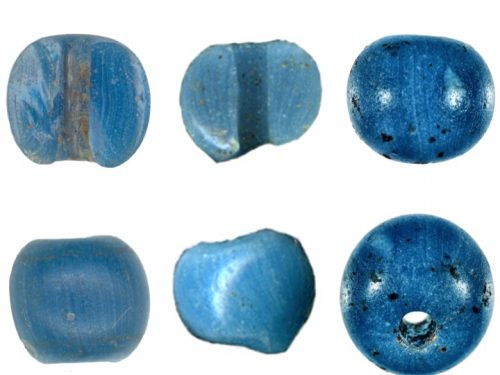General Discussion
Related: Editorials & Other Articles, Issue Forums, Alliance Forums, Region ForumsBlue beads in the tundra
Glass beads the size of blueberries found by archaeologists in a Brooks Range house pit might be the first European item ever to arrive in North America, predating the arrival of Columbus by a few decades.
Made in Venice, Italy, the tiny blue beads might have travelled more than 10,000 miles in the skin pockets of aboriginal adventurers to reach Bering Strait. There, someone ferried them across the ocean to Alaska.
At least 10 of the beads survived a few centuries in the cold dirt of three locations in northern Alaska. Archaeologists recently unraveled the mystery of the beads in a paper published in the journal American Antiquity.
Mike Kunz, one of the authors, is an archaeologist with the University of Alaska Museum of the North in Fairbanks. He retired in 2012 from the Bureau of Land Management after three decades as an expert on ancient people of Alaska north of the Arctic Circle. Working for BLM, he visited Punyik Point several times.
...
Archaeologists have dug at Punyik Point for a long time. It’s where William Irving of the University of Wisconsin in the 1950s and 1960s found two turquoise beads, each with a hole through its center.
In 2004 and 2005, Kunz, BLM archaeologist Robin Mills and other experienced scientists returned to Punyik Point using funding for sites that might be in danger of eroding away. There, they found three more of the beads near some copper bangles — metal adornments that resemble flat hoop earrings — and other metal bits that might have been part of a necklace or bracelet.
...
In the 1400s, craftsmen in the city-state of Venice traded with people throughout Asia. The beads might have traveled in a horse-drawn cart along the Silk Road eastward toward China. From there, “these early Venetian beads found their way into the aboriginal hinterlands, with some moving to the Russian Far East,” the authors wrote in their recent paper.
After that great journey, a trader may have tucked the beads into his kayak on the western shore of the Bering Sea. He then dipped his paddle and made passage to the New World, today’s Alaska. The crossing of Bering Strait at its narrowest is about 52 miles of open ocean.
Kunz and Mills think the beads found at Punyik Point and two other sites probably arrived at an ancient trading center called Shashalik, north of today’s Kotzebue and just west of Noatak. From there, people on foot, maybe traveling with a few dogs, carried them deep into the Brooks Range.
https://news.uaf.edu/blue-beads-in-the-tundra/
MontanaMama
(23,314 posts)Beads made in Italy in the 1400's find their way to Alaska (or what is now AK). Imagine what this new world looked like to those who made the trip...
Demovictory9
(32,456 posts)
lagomorph777
(30,613 posts)Recent finds are pushing back dates in many places.
Gobekle Tepe and nearby sites in Turkey are elaborate megalithic structures with beautiful carvings. They were built nearly 12,000 years ago.
Oak Island in Canada has turned up European artifacts from the 1200s and 1300s.
There are people on the West coast of South America, descended from Japanese ancestors, dating back thousands of years.